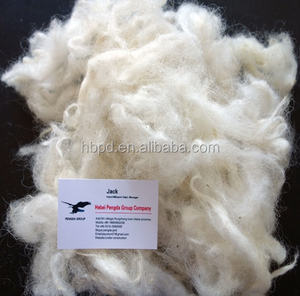What Is Cashmere and How Does It Differ to Other Fabrics?
What Is Cashmere and How Does It Differ to Other Fabrics?
Blog Article
Checking Out the Different Kinds Of Cashmere an All-natural Fiber for Ultimate High-end
Cashmere, a natural fiber, is typically connected with luxury and comfort. The much more budget friendly Chinese cashmere, the typical Scottish version, and the premium Italian blend, all inform a various tale of this remarkable fiber.
Understanding the Elegant Nature of Cashmere
Cashmere, typically associated with high-end and comfort, holds an unique allure in the globe of natural fibers. Unlike other natural fibers, cashmere combines insulation with breathability, providing unequaled convenience across varying temperatures. Its glossy finish and soft texture contribute to its premium charm, justifying the premium cost that often comes with cashmere garments.
Simply What Is Cashmere and Where Does It Come From?

Provided these outstanding high qualities, one might ask yourself about the beginning and make-up of this lavish fiber. Cashmere is derived from the soft undercoat of cashmere goats, mostly found in Mongolia, China, Iran, and Afghanistan - is cashmere a natural fiber. These goats are adapted to harsh weather problems, producing a very great, soft underfur as a protection versus the bitter cold. This underfur, or undercoat, is what is harvested for cashmere. Each spring, when the goats naturally shed their winter season layer, farmers comb out the fine underhair, leaving the coarser hair behind. This precise process adds to the scarcity and high price of cashmere. With its beginning in the severe landscapes of Asia, cashmere is a testimony to nature's capability to generate luxury from hardship.
Deciphering the Different Kinds Of Cashmere
Understanding the various kinds of cashmere is crucial to valuing the top quality and unique characteristics of this glamorous textile. Normally, cashmere is categorized into 3 types: raw, virgin, and reused. Raw cashmere is straight obtained from the goat and is unrefined. This type commonly consists of contaminations such as dust and crude hair. Virgin cashmere, on the various other hand, is the pure, unrecycled material that is rotated into yarn for the very first time. It is the softest and most elegant. Recycled cashmere is made from virgin product that has been previously used. It is re-spun and used in producing lower-cost cashmere products. Decoding these types is the very first step in understanding the exclusivity and worth of cashmere.

The Distinct Characteristics of Each Kind Of Cashmere
Having actually discovered the various groups of cashmere, it ends up being evident that each type boasts its Our site special collection of characteristics. Mongolian cashmere, for circumstances, is renowned for its exceptional high quality, due to Mongolia's rough winters months that produce longer and finer fibers. Alternatively, Chinese cashmere is often much more budget friendly, though its much shorter fibers can minimize longevity.
Why Cashmere Is the Epitome of High-end in vogue
Cashmere holds an esteemed placement on the planet of style, considered as a sign of luxury and refinement. Its appeal is not just in its softness and warmth, but likewise in its discover this rarity and the precise procedure associated with its purchase. Cashmere is acquired from the great undercoat of Himalayan goats, known for their exceptional top quality fiber. The deficiency of this fiber, incorporated with the labor-intensive procedure of collection, adds to its high rate and special status. Cashmere's exceptional convenience and durability make it a desired product in the creation of premium garments. Its natural light-weight and shielding homes include to its charm, making it the epitome of deluxe in vogue.
The Refine of Making Cashmere: From Goat to Garment
The journey of cashmere, from being an undercoat of a Himalayan goat to a lavish garment, is a detailed one. With the advent of springtime, farmers in Mongolia and China accumulate the wool by combing the goats, making certain no harm is done. The acquired wool includes rugged external hair and soft downy undercoat. This mix is then meticulously separated, with just the soft down utilized for cashmere. This raw cashmere is cleaned, dyed and spun into thread. The thread is then woven or knitted right into materials. The final action involves cleaning and pushing to offer the material its particular gentleness and heat. From goat to garment, each action is a testimony to the creativity, skill and persistence associated with crafting cashmere.

Final Thought
In final thought, cashmere, with its all-natural elegance and unparalleled convenience, rules supreme in the world of luxury style. The variety in types, ranging from the soft Mongolian, light-weight Indian Pashmina, inexpensive Chinese, typical Scottish, to the vivid Italian, reveals the convenience of this natural fiber. The meticulous process of changing it from a goat to a garment further includes in its exclusivity, making cashmere the embodiment of elegance and luxury.
Cashmere, an all-natural fiber, is frequently linked with luxury and comfort (is cashmere a natural fiber).Cashmere, typically connected with luxury and comfort, holds a distinct allure in the world of natural fibers. Unlike other natural fibers, cashmere combines insulation with breathability, providing unparalleled convenience across differing temperature levels. Cashmere is acquired from the soft undercoat of cashmere goats, largely discovered in Mongolia, China, Iran, and he said Afghanistan. Cashmere is derived from the great undercoat of Himalayan goats, known for their exceptional quality fiber
Report this page